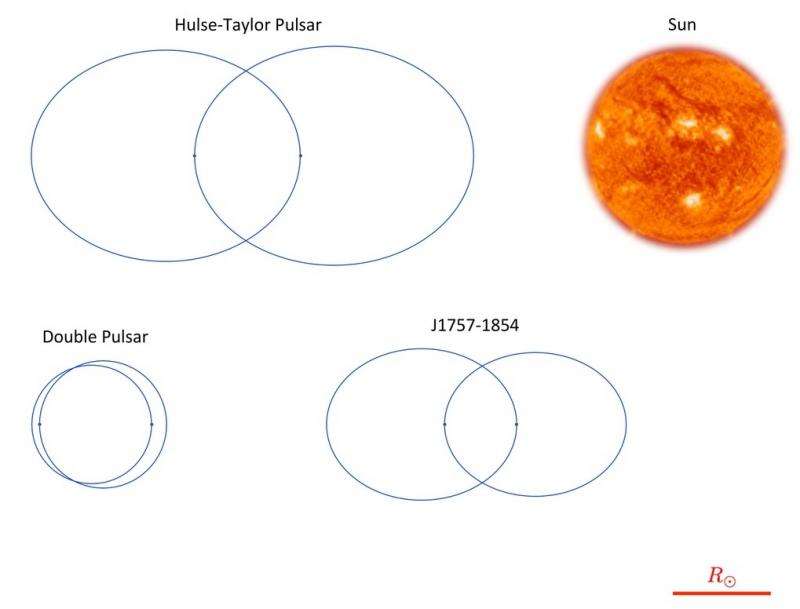Discovery of the most accelerated binary pulsar

Fifty years after Jocelyn Bell discovered the first pulsar, students are no longer going through reams of paper from pen chart recorders but instead search through 1,000s of terabytes of data to find these enigmatic pulsating radio stars. The most extreme binary pulsar system so far, with accelerations of up to 70 g has been discovered by researchers at the Max Planck Institute for Radio Astronomy (MPIfR) in Bonn. At their closest approach the orbit of the pulsar and its companion neutron star would easily fit inside the radius of the Sun.
Although most of the more than 2,500 pulsars known are solitary objects, a few are found in tight binary systems. The discovery of the first of these, the Hulse-Taylor pulsar, famously won the Nobel Prize for "opening up new possibilities for the study of gravitation."
This latest discovery was made as part of the High Time Resolution Universe Survey for pulsars using the 64-m Parkes telescope in Australia. The survey is a collaboration between the Australia Telescope National Facility, Istituti Nazionale di Astrofisica, Manchester University, Swinburne University and the MPIfR.
"The challenge is not in the observing but in the processing of the data, which requires huge amounts of computing power," explains David Champion, an astronomer at the MPIfR and one of the PIs of the project. "We also had to develop new algorithms to search specifically for these accelerated systems."
Using powerful computing clusters across the world, including the MPIfR's 'Hercules' cluster located at the MPG's computer centre at Garching, researchers were able to search their data in unprecedented detail for these rare objects.
The pulsar was discovered by Andrew Cameron, a PhD student at the MPIfR responsible for processing the data, "After going through 100s of 1,000s of candidates this one immediately stood out because of its large acceleration. I realised that it was potentially very exciting but it took months of detective work before we knew exactly what we'd found."
The system was soon also being observed by Manchester University's 76-m Lovell telescope, the 100-m Green Bank telescope, with collaborators at West Virginia University, and the MPIfR's 100-m Effelsberg telescope.
The new system will be an excellent laboratory to test theories of gravity, including General Relativity.
"This system shows many similarities with the Nobel Prize winning binary, but this one is even more extreme," concludes Norbert Wex, also at the MPIfR, an expert in testing gravity theories using pulsars. "Some GR effects are stronger than in any other binary pulsar. That makes it a great system to test Einstein's theory."
Provided by Max Planck Society




















